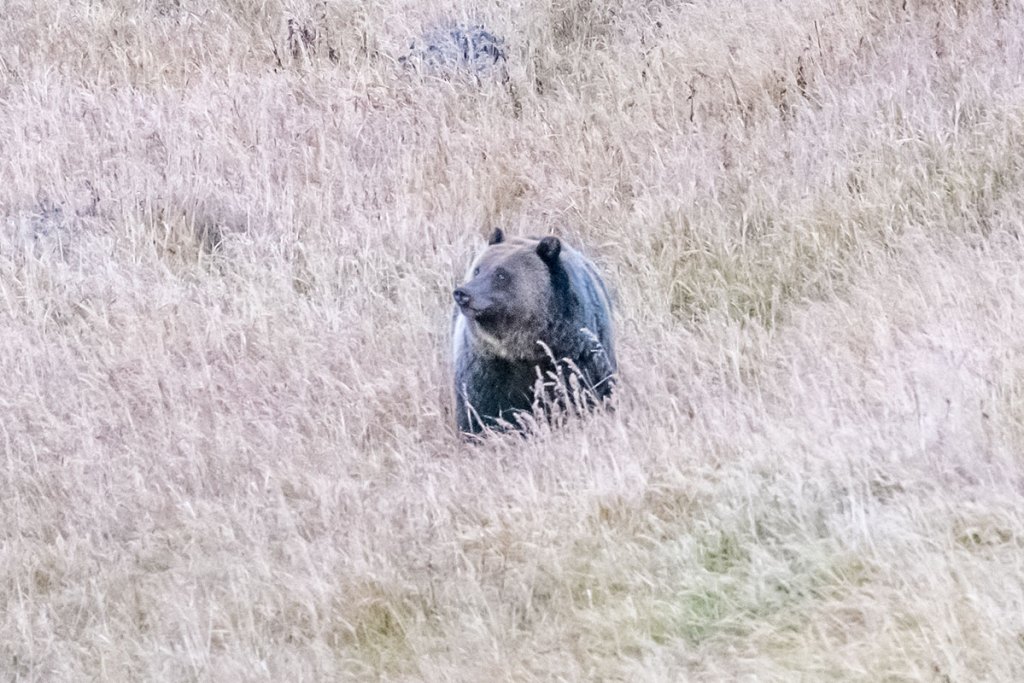Yellowstone National Park is home to one of the largest populations of grizzly bears in the United States. These majestic creatures play an important role in the park’s ecosystem, and are a must see attraction for visitors.

Grizzly Bear Population in Yellowstone





Grizzly bears have been a part of the Yellowstone ecosystem for thousands of years. When the park was established in 1872, there were an estimated 500 grizzly bears living within its boundaries. However, by the early 1900s, the population had declined to just over 100 bears. This decline was due to a number of factors, including hunting, habitat loss, and competition from other predators.



In 1975, the grizzly bear was listed as a threatened species under the Endangered Species Act. This listing helped to protect the bears from further hunting and habitat loss. In addition, the National Park Service began a number of programs to help the bear population recover. These programs included closing garbage dumps, which had been attracting bears into developed areas, and conducting research to better understand the bears’ needs. This bear is called Rasberry and was a cub of Snow three years ago.



As a result of these conservation efforts, the bear population in Yellowstone has made a remarkable recovery. Today, there are over 700 grizzly bears living in the park. This population is considered to be stable and self-sustaining.




This mama bear is called Snow. She had two cubs this year and we were fortunate to see them.





Grizzly bears play an important role in the Yellowstone ecosystem. They are a top predator, and they help to control populations of other animals, such as elk and bison. The bears also help to disperse seeds and pollinate plants.
Where We’ve seen Grizzly Bears in Yellowstone

We saw 5 different grizzly bears on numerous days on this trip. Grizzly bears can be seen throughout Yellowstone National Park, but some of the best places to look include:
- Lamar Valley: This valley is a great place to see grizzly bears feeding on grasses and wildflowers in the spring and summer. They tend to be too far off in the distance for a good photo. We also saw one near the northeast entrance.
- Hayden Valley: This valley is another popular spot for grizzly bear sightings, especially in the fall when the bears are fattening up for winter. A couple of years ago we saw one along the Yellowstone river dining on an elk carcus.
- Dunraven Pass: This pass is a popular spot for hiking. We saw one grizzly bear here a few years ago.
- East Entrance Road: This area is located just outside the park’s north entrance, and grizzly bears can often be seen feeding on berries, roots and grubs. This is where we have seen the most bears on this trip.
Bison

The bison is the largest land mammal in North America, and it is one of the most iconic animals in Yellowstone National Park. Bison have been a part of the Yellowstone ecosystem for thousands of years, and they play an important role in keeping the balance of nature.



Bison are herbivores, and their diet consists of grasses, wildflowers, and other vegetation. Bison are also grazers, which means that they help to keep the grasslands healthy by preventing them from becoming overgrown. Bison also help to disperse seeds and pollinate plants.

Bison are social animals, and they live in herds of up to 1,000 individuals. Herds are typically led by a dominant male, and they are divided into smaller groups based on age and gender. Bison are very protective of their young, and they will often form a circle around their calves to protect them from predators.



We watched this bison cross the Yellowstone River.